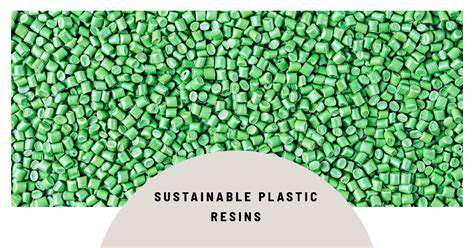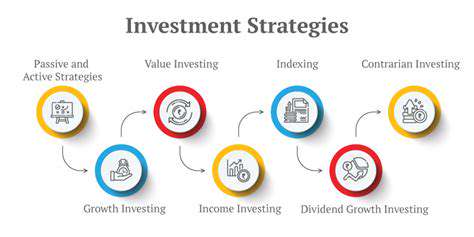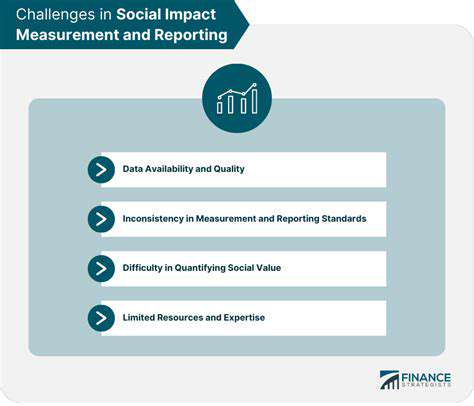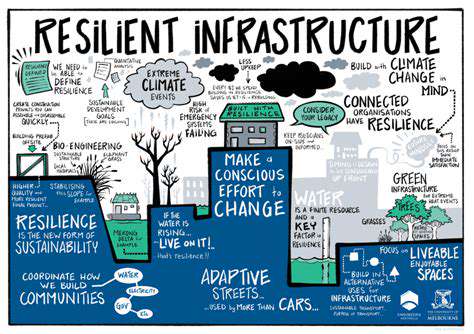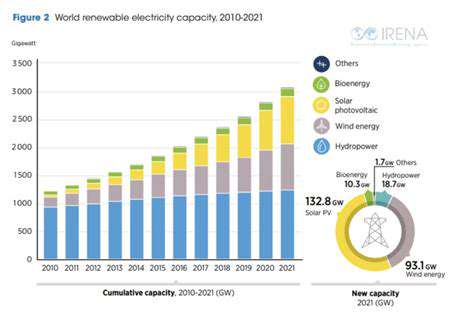The Future of Wind Turbine Materials
Advanced Composites for Enhanced Performance
Advanced Fiber Reinforcement
The wind turbine industry is experiencing a transformation through cutting-edge composite materials, especially in fiber reinforcement technology. Engineers now leverage ultra-strong, lightweight materials like carbon fiber and aramid fiber to dramatically decrease turbine blade weight without compromising structural strength. This breakthrough leads to better efficiency, lower material expenses, and reduced environmental impact across the turbine's lifespan. The exceptional strength-to-weight characteristics of these fibers enable innovative blade designs, permitting larger rotor diameters and longer spans - essential factors for capturing more wind energy and increasing power output.
Significant progress has also been made in fiber-matrix interface technology. Scientists are developing novel bonding techniques between high-performance fibers and polymer matrices, resulting in more durable composite materials. These improved bonding methods prove indispensable for maintaining structural integrity against the extreme stresses and weather conditions that turbines endure, ensuring reliable operation for years. Such fiber reinforcement advancements continue to redefine the possibilities in wind turbine engineering.
Improved Matrix Materials
Polymer resins serving as matrix materials fundamentally influence composite performance. Recent innovations have yielded advanced polymers with superior durability, rigidity, and environmental resistance. These enhanced materials are particularly valuable for wind turbine blades, which face constant exposure to wind forces, precipitation, and UV radiation. The creation of thermally stable polymers is especially important for maintaining blade integrity during temperature extremes.
The exploration of bio-based polymers offers an eco-friendly substitute for conventional petroleum-derived resins. This sustainable approach could substantially reduce the environmental impact of turbine production while preserving performance qualities. Another exciting development involves self-repairing matrix materials that can automatically mend minor damage, potentially extending component life and decreasing maintenance requirements. These matrix material innovations contribute significantly to more sustainable and durable wind turbine solutions.
Manufacturing Techniques and Design Optimization
Production methods for composite components are undergoing remarkable advancements. Modern techniques enable fabrication of sophisticated aerodynamic shapes that minimize drag in turbine blades. Additive manufacturing methods, including 3D printing, are gaining popularity for creating custom-designed parts that reduce material waste and improve cost efficiency. These innovative production approaches offer new opportunities for enhancing turbine component performance and longevity.
Computer-aided engineering tools like computational fluid dynamics and finite element analysis have become indispensable for turbine design optimization. These powerful simulations allow engineers to evaluate component behavior under various operating scenarios, identifying potential issues and refining designs for peak efficiency. By combining these computational methods with advanced composites, engineers continue to expand the boundaries of wind turbine technology, producing increasingly powerful and sustainable energy solutions.
The Role of 3D Printing in Material Innovation
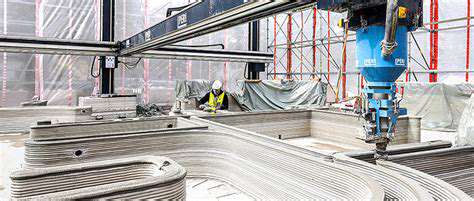
Additive Manufacturing's Impact
Additive manufacturing represents a fundamental shift in production capabilities, allowing fabrication of highly complex, customized components with exceptional precision. This groundbreaking technology continues to redefine product development and manufacturing processes across multiple sectors.
The technology's rapid prototyping capacity dramatically shortens development timelines while reducing expenses. This flexible approach to design enables manufacturers to adapt quickly to evolving market requirements and consumer preferences.
Material Versatility and Customization
3D printing stands out for its compatibility with diverse materials, from conventional plastics and metals to advanced composites and biological substances. This broad material spectrum facilitates production of highly specialized components for specific applications.
Whether creating precision medical devices or aerospace components, additive manufacturing provides capabilities unattainable through traditional production methods.
Rapid Prototyping and Iterative Design
The prototyping speed of 3D printing has revolutionized product development cycles. Design teams can quickly produce and evaluate physical prototypes, enabling continuous refinement and enhancement.
This cyclical improvement process yields superior products while conserving both time and financial resources throughout development.
Cost-Effectiveness and Reduced Waste
While 3D printing systems require substantial initial investment, their long-term economic benefits are significant. The technology's material efficiency - using only what's necessary for each component - substantially reduces waste.
This sustainable approach decreases material costs while minimizing environmental impact, making it an attractive option for eco-conscious manufacturers.
Design Flexibility and Complexity
Additive manufacturing unlocks unprecedented design freedom, enabling production of intricate geometries that would be impractical or impossible with conventional techniques.
This capability allows engineers to develop innovative solutions that push the boundaries of traditional manufacturing constraints.
Applications Across Industries
3D printing finds applications in numerous fields, including aviation, automotive, healthcare, and consumer products. In medicine, it enables production of patient-specific implants and prosthetic devices, transforming treatment options.
The technology also revolutionizes custom tool production, allowing manufacturers to efficiently meet specialized customer requirements.
Challenges and Future Directions
Despite its advantages, 3D printing faces obstacles including material constraints, production scalability, and workforce training needs. Ongoing research continues to address these limitations through material science breakthroughs and process improvements.
The technology's future appears bright, with anticipated advances in speed, material options, and affordability likely to expand its applications across even more industries.
